Thimpu: The capital city of Bhutan
Exploring Thimphu, the capital of Bhutan, offers a captivating mix of tradition and modernity. As the nation's political and economic hub, Thimphu provides an authentic insight into Bhutanese culture, all framed by scenic valleys and the majestic eastern Himalayas.
Here are some of the top highlights and experiences to enjoy while visiting Thimphu:
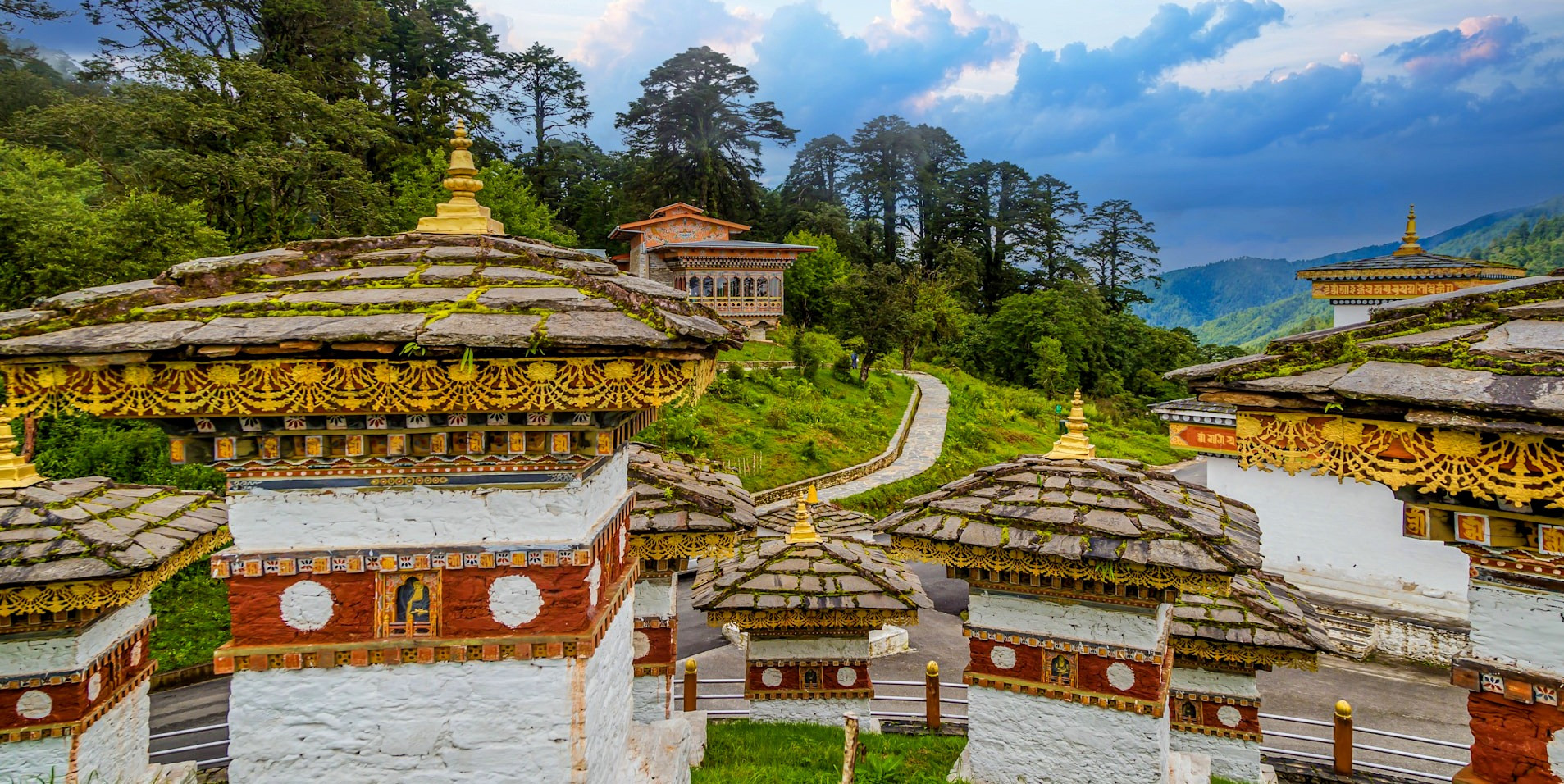
-
Tashichho Dzong: This impressive fortress serves as the seat of the Bhutanese government and the central monastic body. The dzong's architecture is a stunning example of Bhutanese craftsmanship, featuring intricate woodwork and beautiful courtyards. It's particularly enchanting in the early evening when it is beautifully lit up.
-
National Memorial Chorten: This large Tibetan-style stupa is one of Thimphu’s most prominent religious structures. It was built in memory of the third king of Bhutan and is a focal point for daily religious gatherings.
-
Folk Heritage Museum: For a glimpse into traditional Bhutanese life, the Folk Heritage Museum offers an excellent showcase of the rural history, artifacts, and practices of Bhutan. The museum itself is housed in a restored traditional farmhouse, providing a realistic portrayal of the past.
-
Buddha Dordenma Statue: Situated atop a hill in Kuenselphodrang Nature Park, this gigantic Buddha statue is one of the largest in the world and offers panoramic views of the Thimphu Valley. The site is peaceful and inspiring, ideal for reflection and photography.
-
Thimphu Weekend Market: To experience the local life, the Weekend Market is a must-visit. Locals from the nearby regions come to sell their produce and crafts. It's a great place to try local foods, buy traditional handicrafts, and interact with the friendly Bhutanese people.
-
Changangkha Lhakhang: This ancient temple, built in the 12th century, is a spiritual center for Thimphu residents. Located on a ridge above central Thimphu, the temple offers beautiful views of the city and valley.
-
The Royal Textile Academy: Learn about Bhutan's rich tradition of textile arts at the Royal Textile Academy. The academy preserves and promotes the art of Bhutanese textiles and provides training in traditional weaving techniques.
-
Simply Bhutan Museum: An interactive ‘living’ museum that provides a good introduction to various aspects of Bhutanese traditional life. It’s also an initiative to employ and empower young Bhutanese people.
Thimphu seamlessly blends tradition with modernity, offering travelers a unique cultural immersion paired with contemporary comforts. Whether you're drawn to its history, spirituality, art, or simply wish to enjoy the lively ambiance of a Bhutanese city, Thimphu presents a diverse range of experiences to satisfy every interest.
Visit Weekend Market of Thimpu
Visiting the Weekend Market in Thimphu is a vibrant and colorful experience, essential for anyone looking to immerse themselves in the daily life of Bhutan's capital city. Known locally as the Centenary Farmers Market, it's located by the Wang Chhu river and is the largest domestic market for the farmers of Bhutan. The market operates every weekend, from Friday morning through Sunday evening, and is a hub of activity where locals and tourists alike can explore an array of products and engage with the local community.
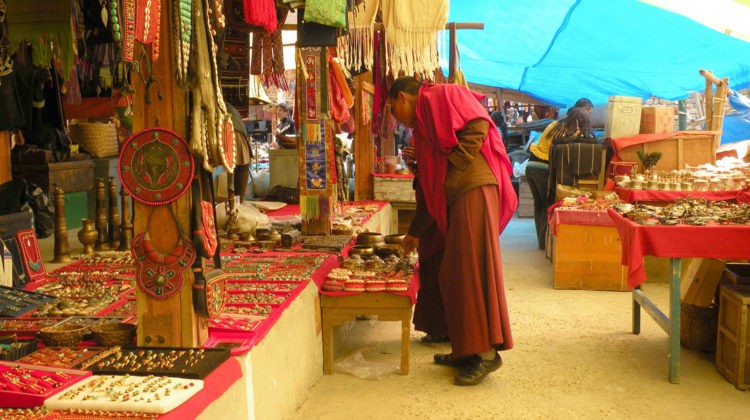
What to Expect at the Weekend Market of Thimphu
-
Local Produce: The market showcases the region's rich agricultural produce. Visitors can find everything from fresh fruits and vegetables to Bhutanese red rice and homemade cheeses. It's a great opportunity to discover unusual local ingredients like ferns, orchids, and a variety of mushrooms that you might not find elsewhere.
-
Traditional Bhutanese Foods: The food section of the market is a must-visit. Here, you can sample authentic Bhutanese dishes and snacks. Try some Jasha Maroo (spicy chicken), Momos (dumplings), and the famous Ema Datshi (chili and cheese), which are all staples of Bhutanese cuisine.
-
Handicrafts Section: While the main focus of the market is on food, there is also a section dedicated to Bhutanese handicrafts. This part of the market is ideal for picking up souvenirs such as hand-woven textiles, traditional boots, wooden bowls, and handmade paper products.
-
Vibrant Atmosphere: The market is bustling with energy, with farmers and craftspeople eager to share their products and stories. It's a lively part of Thimphu where you can feel the heartbeat of the city and see the blend of traditional and modern lifestyles.
-
Interactions with Locals: This is a great place for cultural exchange; visitors can chat with local farmers and vendors, learn about their ways of life, and gain insights into the local economy and seasonal cycles.
-
Photographic Opportunities: For those interested in photography, the market offers countless opportunities to capture the vibrant market scenes, colorful stalls, and the daily life of Bhutanese people.
The Weekend Market in Thimphu provides a sensory and cultural experience that is both enriching and enjoyable, reflecting the spirit and hospitality of Bhutan. Whether you're there to shop, eat, or simply soak in the atmosphere, it's a place that connects you deeper with the charm of Bhutan.
Go For Bird Watching
Bird watching in Bhutan is a captivating experience for nature lovers and birding enthusiasts, offering the opportunity to spot some of the world’s rarest and most exotic bird species in pristine natural surroundings. The country’s diverse landscapes—from lush subtropical forests in the south to alpine habitats in the north—provide ideal conditions for avian life. With more than 700 species recorded, Bhutan has earned a reputation as one of the premier bird watching destinations in the world..
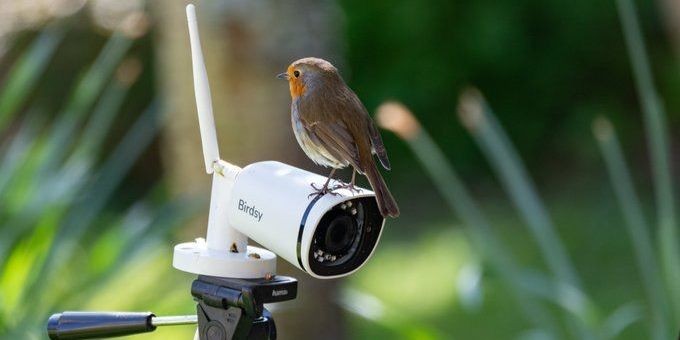
Prime Locations for Bird Watching in Bhutan
-
Phobjikha Valley: Known for the endangered Black-necked Cranes that migrate here from the Tibetan Plateau during the winter months (from late October to mid-February). The valley offers not just a chance to see these majestic birds but also stunning natural beauty.
-
Bumdeling Wildlife Sanctuary: Another winter home for the Black-necked Cranes, this sanctuary in eastern Bhutan also hosts a variety of other bird species, making it a key area for bird watching.
-
Royal Manas National Park: Located in southern Bhutan, this national park is one of the oldest conservation areas in Bhutan and is home to a rich array of birdlife, including the Rufous-necked Hornbill, Great Hornbill, and the endangered Bengal Florican.
-
Jigme Dorji National Park: This park offers diverse habitats from lowland forests to high alpine meadows, hosting species such as the Ibisbill, Satyr Tragopan, and the elusive Snow Leopard (for those also interested in wildlife).
-
Paro Valley: The valley is excellent for easily accessible bird watching, with opportunities to spot species like the bloodpheasant, Himalayan Monal, and various bush warblers.
Whether you're a seasoned birder or a curious newcomer, the avian world of Bhutan promises rich rewards and unforgettable sights.
Explore Ancient Art
Exploring ancient art in Bhutan provides an immersive journey into the country’s rich cultural and spiritual heritage. Deeply intertwined with Buddhism, Bhutanese art is both symbolic and sacred, featuring intricate designs that convey profound religious meanings. These artistic traditions, preserved for centuries, reflect the kingdom’s devotion to spirituality and its commitment to cultural preservation.
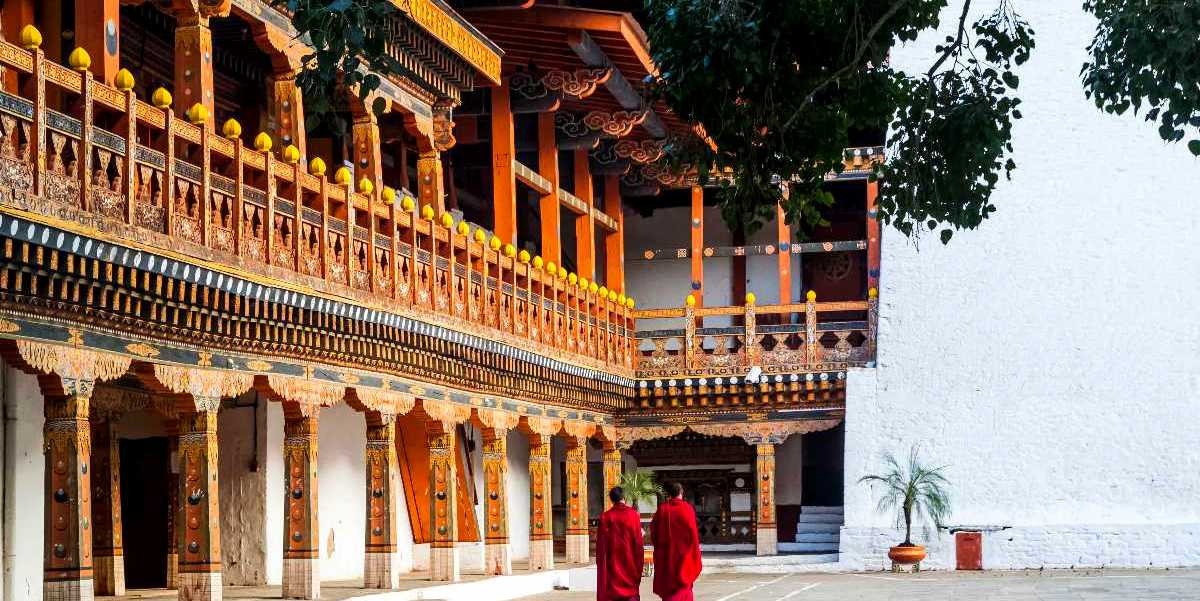
Key Aspects of Bhutanese Ancient Art
-
Thangka Paintings: These are intricate paintings on silk or cotton that depict Buddhist deities, scenes, or mandalas. Thangkas are used in religious practices and as a meditation tool to help individuals visualize themselves as the Buddha. The art of Thangka is considered sacred, with artists often following rigorous spiritual and artistic disciplines.
-
Sculpture: Bhutanese sculpture mainly revolves around religious statuary and is found in almost every monastery and temple. These sculptures are often gilded and elaborately decorated, embodying the divine forms of Buddhas, Bodhisattvas, and other deities.
-
Wood Carving: Woodwork is an essential part of Bhutanese architecture and is also used in creating religious and household items. Intricate carvings are found on dzongs, temples, traditional Bhutanese houses, and furniture, featuring floral, animal, and religious motifs.
-
Wall Murals: Many monasteries and dzongs in Bhutan are adorned with detailed wall murals that tell stories from Buddhist texts, depicting various gods, demons, and symbols. These murals not only beautify the space but also convey teachings and historical events to the visitors.
-
Textiles: Bhutan is known for its weaving, which is considered an art form passed down through generations, primarily by women. Traditional textiles include hand-woven fabrics used in clothing and ceremonial dress, often made from silk and featuring vibrant patterns and colors.
Exploring ancient art in Bhutan is not just about appreciating aesthetic beauty but also understanding the profound spiritual and cultural significance that these artworks hold. Each piece tells a story, offering glimpses into the soul of Bhutan.
Get Hot Spring Therapy
Hot spring therapy, or 'Tshachus' as it's known locally in Bhutan, is a cherished traditional practice believed to have medicinal and healing properties. The mineral-rich waters are thought to alleviate various ailments such as arthritis, body aches, and even skin diseases. Visiting these hot springs is not just beneficial for physical health but also offers a serene and spiritually rejuvenating experience amidst Bhutan's stunning natural landscapes.
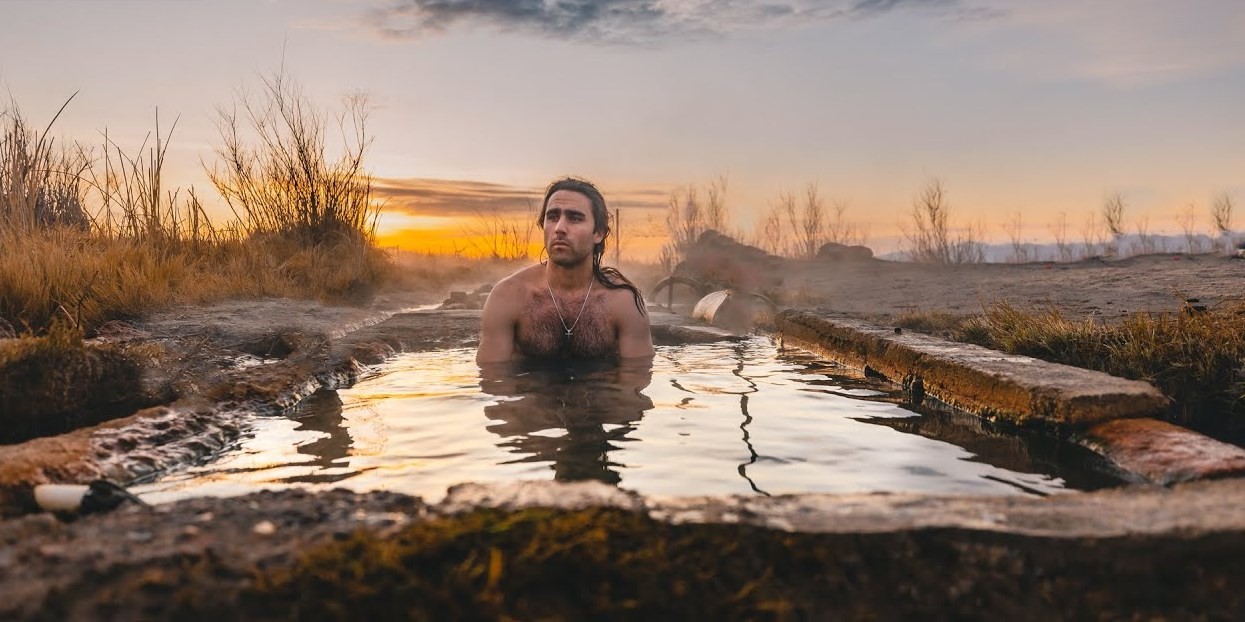
Popular Hot Springs in Bhutan
-
Gasa Tshachu: Located in the northern region of Bhutan near Gasa Dzong, Gasa Tshachu is perhaps the most famous hot spring in the country. Nestled along the banks of the Mo Chhu river, it is surrounded by lush forests and towering mountains, making it a picturesque spot for relaxation and recovery. The journey to Gasa involves a scenic trek, adding an element of adventure to the experience.
-
Chubu Tshachu: Situated in the Punakha district, Chubu Tshachu is another popular hot spring known for its therapeutic waters. This spring is more accessible compared to Gasa and is frequented by locals and tourists alike.
-
Dur Tshachu: Located in Bumthang, in Central Bhutan, Dur Tshachu is set in a remote region, making it less crowded and ideal for those seeking peace and solitude. The hot springs are situated in the middle of a forest, providing a tranquil natural setting that enhances the therapeutic experience.
-
Menchu: Lying in the Lhuentse district of Eastern Bhutan, Menchu is known for its sacred waters. The spring is considered holy and is often visited by locals seeking spiritual and physical healing.
Visiting Bhutan's hot springs offers a unique way to engage with the country's natural beauty and traditional healing practices. Whether you're winding down after a trek or seeking a healthful escape, the hot springs of Bhutan provide a soothing and culturally enriching experience.
Mountain Biking
Mountain biking in Bhutan is an exhilarating adventure that combines physical activity with unparalleled scenic beauty, offering riders a unique way to explore the rugged landscapes and pristine nature of this Himalayan kingdom. Bhutan’s diverse terrain, ranging from gentle valleys to challenging mountain passes, makes it an ideal destination for bikers of all skill levels.
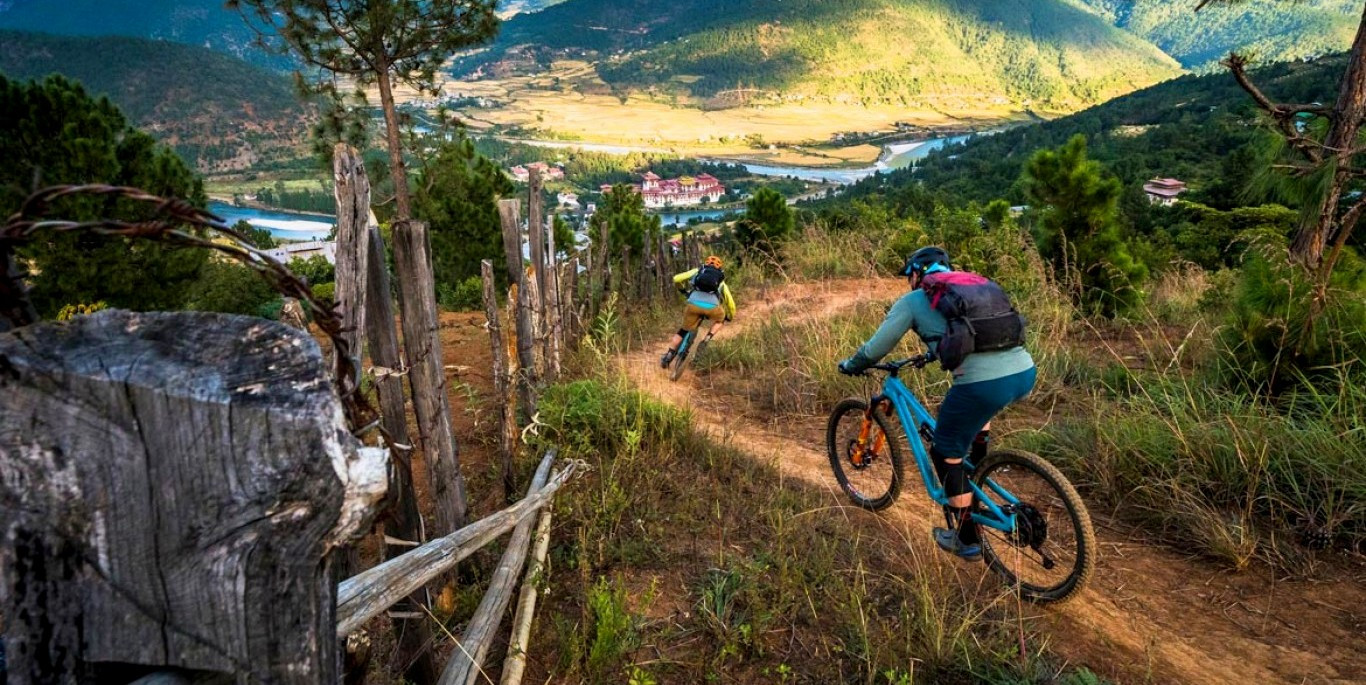
Popular Mountain Biking Routes in Bhutan
-
Paro Valley: This route is perfect for beginners and intermediate riders. It offers a mix of easy tracks and some challenging sections with stunning views of traditional Bhutanese architecture and landscapes. The ride can include visits to iconic landmarks like the Paro Dzong and the National Museum.
-
Thimphu to Punakha: For more experienced riders, the route from Thimphu to Punakha via the Dochula Pass provides an exciting challenge. This route features a high-altitude pass at 3,100 meters, offering panoramic views of the Himalayan range. The descent into Punakha is thrilling and tests a rider’s technical skills.
-
Bumthang Valley: Known as the cultural heart of Bhutan, Bumthang offers a mix of moderate trails that meander through ancient temples, monasteries, and traditional Bhutanese villages. This area provides a blend of cultural immersion and mountain biking.
-
East-West Traverse: For the ultimate adventure, the East-West traverse of Bhutan is a long-distance challenge that stretches across the country, from Trashigang in the East to Paro in the West. This route covers some of the most remote and untouched parts of Bhutan, offering an intense experience for serious mountain bikers.
Mountain biking in Bhutan is more than just a sport; it’s an immersive experience that allows you to connect deeply with the natural and cultural environments of this secluded Himalayan kingdom. Whether cruising through serene valleys or tackling tough mountain terrains, mountain biking in Bhutan offers a unique adventure that’s hard to match.
Experience Bhutanese Cuisine
Experiencing Bhutanese cuisine is a delight for any food lover, offering a unique blend of tastes and flavors that reflect the country's rich cultural heritage and the natural bounty of its landscape. Bhutanese food is hearty, spicy, and imbued with a distinctive character, often featuring a generous use of chili and cheese, which are staples in many dishes. Here’s a guide to savoring the authentic tastes of Bhutan during your visit.
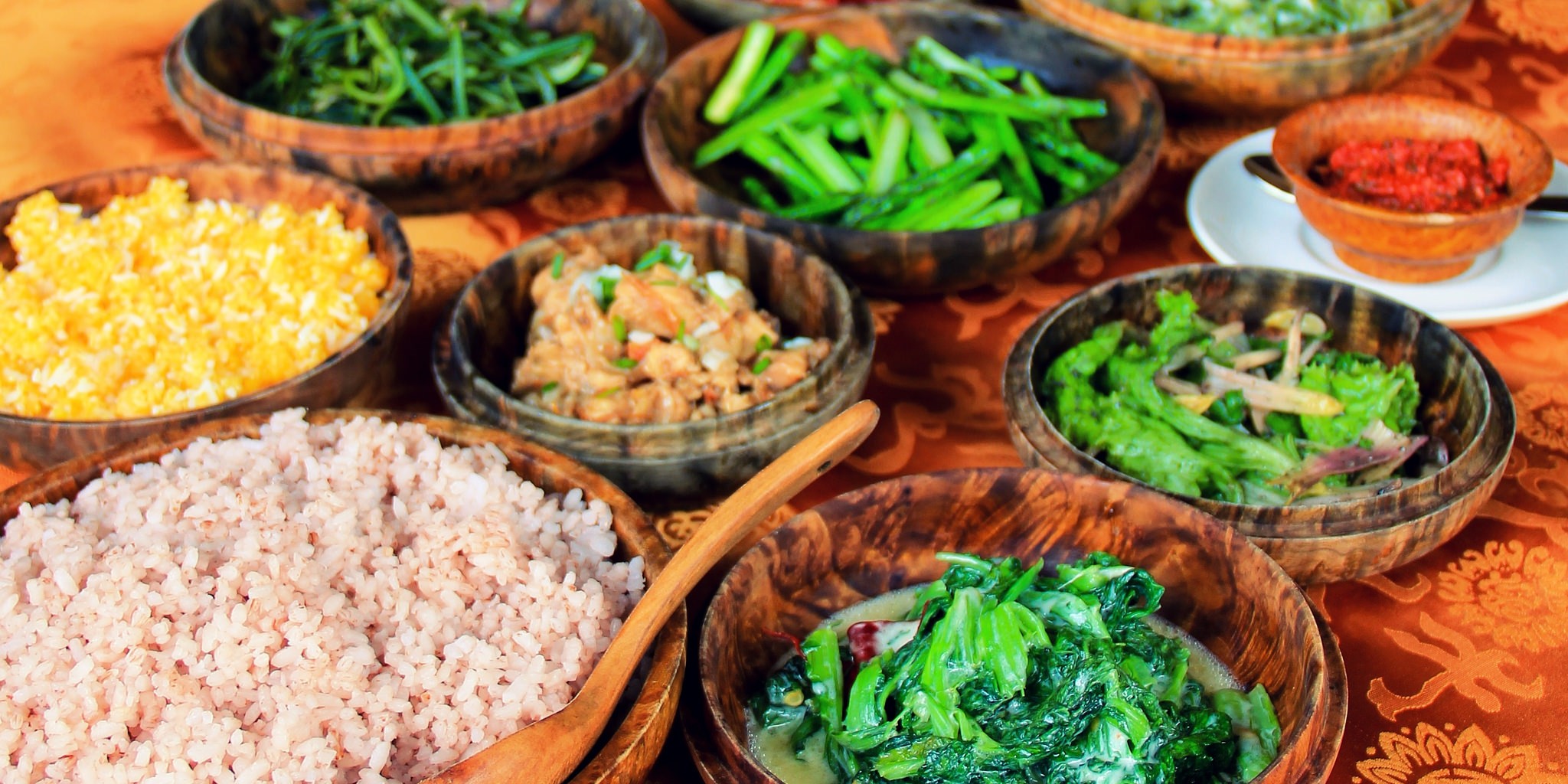
Signature Bhutanese Dishes
-
Ema Datshi: This is the national dish of Bhutan and a must-try for anyone visiting the country. It’s a spicy mix of chilies (ema) and local cheese (datshi). The dish can include varying kinds of chilies, from green to red, and sometimes mushrooms or potatoes are added.
-
Jasha Maroo or Jasha Tshoem: A spicy chicken stew that’s cooked with ginger, garlic, onions, and sometimes tomatoes, flavored with local herbs and spices. It is a common home-cooked dish and is very comforting.
-
Momos: These Tibetan-style dumplings are very popular in Bhutan. They are filled with either meat or vegetables and served steamed or fried, accompanied by a spicy dipping sauce.
-
Phaksha Paa: Pork cooked with spicy red chilies, often combined with radishes or spinach. Like most Bhutanese dishes, it’s rich in flavor and has a hearty, stew-like consistency.
-
Red Rice: This is a Bhutanese staple grown in the Paro Valley. It’s a nutty-flavored, semi-whole-grain rice that pairs beautifully with stews and curries.
Beverages in Bhutan
-
Suja: Also known as butter tea, it’s a blend of tea, butter, and salt. It’s an acquired taste for many but is a staple in the Bhutanese diet and is thought to be nutritious and warming, especially in the cold Himalayan climate.
-
Ara: A traditional alcoholic beverage made from distilled rice or maize. Ara is often homemade and can be served warm or cold, sometimes with added butter or eggs.
Dining Etiquette in Bhutan
-
Eating Habits: Bhutanese people traditionally eat with their hands, but it is common to find utensils in restaurants. Meals are often served buffet-style, especially when dining in a group.
-
Spice Levels: Be aware that Bhutanese food is generally quite spicy. If you’re not accustomed to spicy foods, you may want to ask for less spice when ordering.
-
Offerings: It is customary to say a short prayer or offer food before eating, a practice known as ‘sungchoep’. You might see locals performing this before meals.
Where to Eat
-
Local Eateries: To truly experience Bhutanese cuisine, eat where the locals eat. Small eateries and street vendors offer some of the most authentic Bhutanese food.
-
Tourist Restaurants: These will often cater to a wider variety of palates, offering less spicy versions of traditional dishes and international cuisine as well.
-
Farmhouse Dining: Some tours offer meals in a traditional farmhouse, which provides an intimate glimpse into the lifestyle and culinary practices of a Bhutanese family.
Exploring Bhutanese cuisine is not only about tasting the food but also understanding and appreciating the local culture and traditions that come with it. Each dish tells a story of the Bhutanese people’s adaptation to their environment and their culinary ingenuity.
Hike to. Tiger Nest Monastery
Tiger's Nest Monastery hike, or Paro Taktsang, stands as one of Bhutan’s most iconic and sacred sites. Clinging to a cliffside 900 meters above the Paro Valley, this breathtaking monastery captivates visitors with its dramatic location and spiritual significance. The Hike to Tiger’s Nest is a rewarding journey that blends cultural discovery, natural beauty, and a touch of adventure.
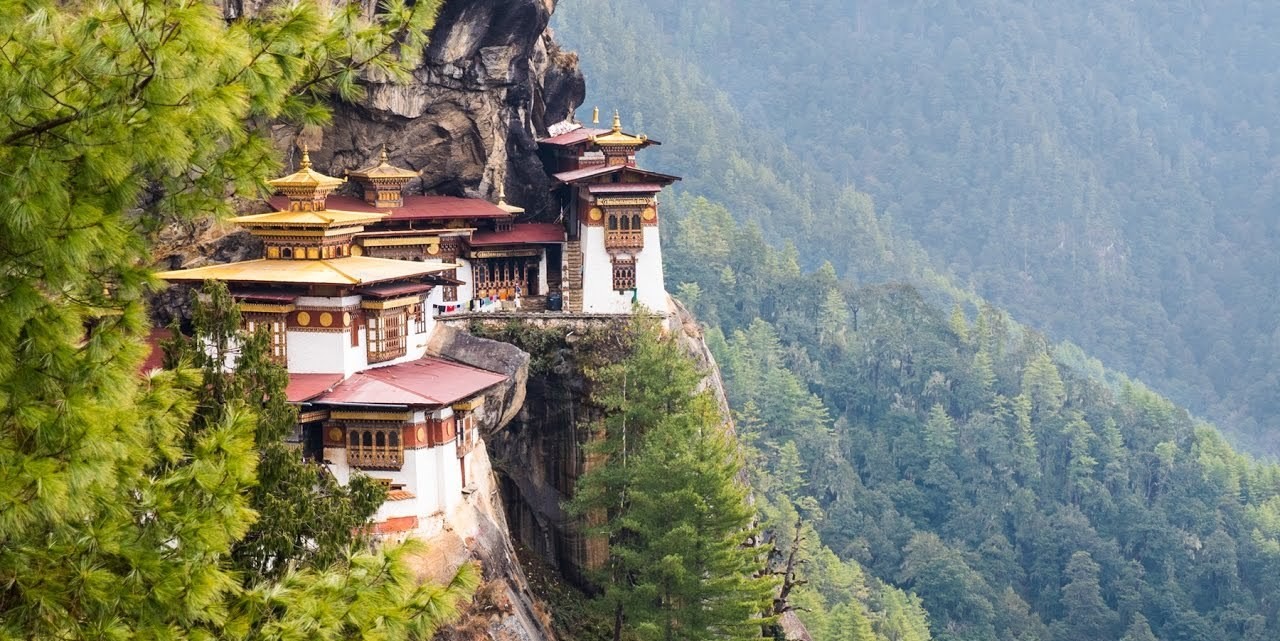
Overview of the Tiger's Nest Monastery Hike
-
Location: The monastery is located near Paro, about 10 km north of the city.
-
Altitude: The trek starts at about 2,600 meters (8,530 ft), and the monastery itself is at approximately 3,120 meters (10,240 ft).
-
Difficulty: The hike is considered moderate to challenging, depending on your level of fitness. It usually takes between 4 to 6 hours to complete the round trip.
What to Expect on the Hike
-
Starting Point: The hike begins at the base, where parking is available. You can hire a guide here if you haven’t already arranged one. Guides are highly recommended as they can provide insights into the cultural and historical significance of the site.
-
The Trail: The path is well-maintained but can be steep and challenging in parts. It winds through beautiful pine forests adorned with Spanish moss, and colorful prayer flags that flutter in the wind, adding to the spiritual ambiance.
-
Cafeteria Stop: About halfway up, there is a cafeteria where many hikers stop for a rest and refreshments. This spot offers a beautiful viewpoint where you can see the monastery seemingly clinging to the cliff.
-
Final Steps: After the cafeteria, the path continues to ascend, including a steep staircase to the monastery entrance. This part of the hike can be quite strenuous, but the views and the experience of arriving at the monastery are rewarding.
-
Inside the Monastery: Once at Tiger's Nest, you can explore the various temples and shrines within the complex. Photography inside the temples is prohibited, but you are free to take photos from the outside areas.
The Tiger's Nest Monastery hike is not only a physical journey but also a spiritual and cultural adventure that provides insight into Bhutan’s religious practices and beliefs. The breathtaking views, the spiritual ambiance of the monastery, and the sense of achievement when you reach the top make this hike a must-do for anyone visiting Bhutan.
Punakha Dzong
Punakha Dzong, known as the Palace of Great Happiness, is one of Bhutan's most beautiful and significant dzongs. Located at the confluence of the Pho Chhu and Mo Chhu rivers in the fertile Punakha Valley, it serves as a stunning example of Bhutanese architecture and a repository of religious and historical artifacts.
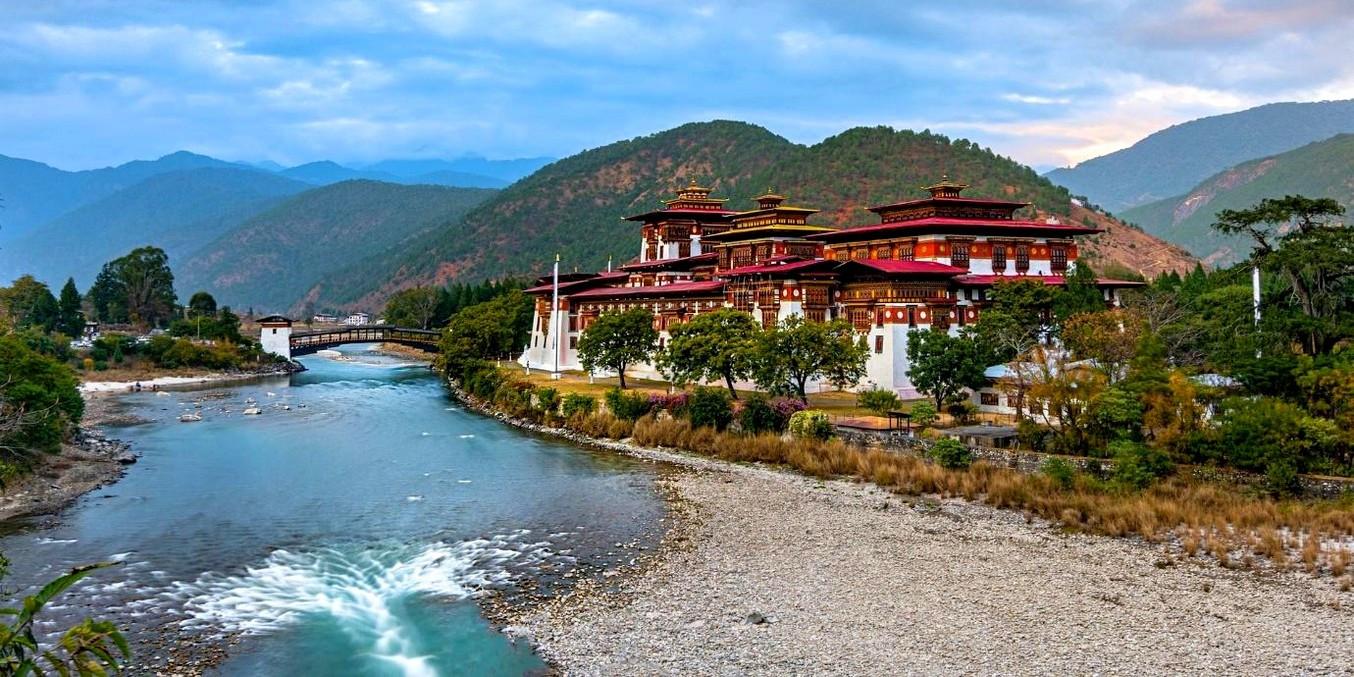
-
Historical Significance: Constructed in 1637 by Zhabdrung Ngawang Namgyal, the unifier of Bhutan, Punakha Dzong was the administrative and religious center of Bhutan until the capital was moved to Thimphu. It has played a crucial role in Bhutan's history, witnessing several key events, including the coronation of the first king of Bhutan in 1907. The dzong continues to be the winter residence of the Je Khenpo, the Chief Abbot of Bhutan, and hundreds of monks who move there from the Thimphu Tashichho Dzong.
-
Architectural Features: The dzong's architecture is noteworthy for its size and the beauty of its design. It features a six-story, whitewashed main tower and intricately carved wooden details painted in vibrant colors. The dzong is surrounded by thick walls that, at one time, served to protect it from invaders. Inside, the complex is a labyrinth of courtyards, temples, administrative offices, and monks’ accommodation.
-
Cultural Importance: Punakha Dzong is not just a tourist attraction but a living museum and an active religious center. It houses many sacred relics from the days of Zhabdrung Ngawang Namgyal. Each year, it is the focal point for the Punakha Tshechu, a religious festival that features mask dances, traditional music, and a re-enactment of a 17th-century battle that occurred in the dzong's vicinity. This festival is one of the most popular Tshechus in Bhutan, drawing thousands of locals and tourists alike.
Visiting Punakha Dzong offers a glimpse into the spiritual and historical heart of Bhutan, showcasing the rich heritage and architectural prowess that define this Himalayan kingdom. It remains a must-visit for anyone wanting to understand Bhutan's past and present.
Tips for Things to do in Bhutan
When planning your trip to Bhutan, a country renowned for its monastic culture, pristine environment, and vibrant traditions, it's essential to consider how to make the most of your visit. Here are some tips to help you enjoy a range of activities and experiences that Bhutan has to offer:
Plan According to the Seasons
-
Spring (March to May) and autumn (September to November) are the best times to visit Bhutan due to the mild weather and clear skies, which are perfect for trekking and attending festivals.
-
Summer (June to August) brings the monsoon, making trekking less ideal but offering lush landscapes and vibrant greenery, which can be a photographer’s delight.
-
Winter (December to February) is cold but offers a unique experience with fewer tourists and spectacular snow-covered scenery in the higher regions.
Engage in Local Festivals
- Plan your visit around local festivals like Paro Tshechu or Thimphu Tshechu. These colorful events provide insight into Bhutanese culture, with traditional dances, music, and attire. It’s an excellent opportunity for cultural immersion and photography.
Trekking and Hiking
-
Bhutan offers some of the most stunning trekking routes in the world, from the challenging Snowman Trek to the more accessible Druk Path Trek. Always hire a local guide for the best experience and safety.
-
Even non-Trekker's can enjoy shorter hikes like the hike to Tiger’s Nest Monastery, which provides breathtaking views and a rewarding spiritual experience.
Try Bhutanese Cuisine
- Don’t miss out on trying local dishes such as Ema Datshi (chili and cheese) and Red Rice. Bhutanese food can be quite spicy, so communicate your spice preference beforehand.
Respect the Local Culture
-
Dress modestly, especially when visiting religious sites. Shoulders and legs should be covered, and hats should be removed when entering dzongs and temples.
-
Always ask for permission before taking photographs of people or religious ceremonies.
Explore Beyond the Tourist Spots
-
Visit local markets like the Weekend Market in Thimphu to see daily Bhutanese life and try local products.
-
Consider staying in a traditional Bhutanese farmhouse for a night or two to experience rural life and hospitality.
Wildlife and Bird Watching
- Bhutan is a haven for wildlife enthusiasts and bird watchers. Visit Jigme Dorji National Park or Phobjikha Valley to see rare species like the black-necked crane and the elusive snow leopard.
Relax with Bhutanese Hot Springs
- For a more relaxing experience, visit one of Bhutan’s medicinal hot springs, known as Tshachus. The Gasa Hot Springs are particularly famous for their therapeutic properties.
Shopping for Handicrafts
- Support local artisans by purchasing authentic Bhutanese handicrafts such as hand-woven textiles, wooden bowls, or handmade paper. These make unique souvenirs and help sustain traditional crafts.
Prepare for High Altitude
- Some areas in Bhutan are at high altitudes. Take precautions to prevent altitude sickness by acclimatizing properly, staying hydrated, and avoiding strenuous activity too soon after arrival.
Considering all these tips we have prepared a 4 night and 5 days trip to Bhutan. Kindly refer to the link for the trip itinerary. Remember, every activity in Bhutan tends to have a deeper cultural or spiritual significance, enhancing the overall uniqueness of your journey.
Ideal Time
Choosing the ideal time to visit Bhutan depends largely on what activities you're interested in and the type of weather you prefer. Bhutan experiences distinct seasons, each offering different opportunities and experiences for travelers. Here’s a breakdown of the seasons and the best activities for each:
Spring (March to May)
-
Weather: Spring is one of the best times to visit Bhutan, characterized by mild weather and blooming flowers that decorate the landscape.
-
Activities: It's an excellent time for trekking, as the paths are usually dry, and the mountains are covered with wildflowers. Spring is also perfect for photography and bird watching, as the migration season brings many species to Bhutan.
-
Cultural Events: Major festivals like Paro Tshechu and Punakha Tshechu occur in spring, offering vibrant dances, traditional music, and elaborate costumes.
Summer (June to August)
-
Weather: Summer is monsoon season in Bhutan, bringing heavy rains and lush landscapes.
-
Activities: While trekking can be challenging due to mud and leeches, the rains bring out the rich greens of the forests, making it a good time for botanical tours. Photography can also be rewarding with misty landscapes and vibrant flora.
-
Cultural Insight: Visiting during the quieter monsoon season means fewer tourists and more authentic interactions with locals.
Autumn (September to November)
-
Weather: Autumn is another peak season for visitors due to its clear skies and pleasant temperatures.
-
Activities: This season is ideal for trekking, with clear mountain views and excellent walking conditions. Cultural festivals such as Thimphu Tshechu and the Black-Necked Crane Festival are significant attractions.
-
Photography: Autumn provides stunning photographic opportunities with clear skies and the golden hues of the landscape.
Winter (December to February)
-
Weather: Winter in Bhutan is cold, but it often means fewer tourists and clear skies.
-
Activities: It’s a great time for cultural tours, as you can explore Bhutan’s dzongs and museums comfortably without the crowds. Bird watching in lower regions like Phobjikha Valley is also excellent as this is when the endangered black-necked cranes visit.
-
Scenic Views: The higher peaks are snow-capped, offering beautiful panoramic views that are perfect for photography enthusiasts.
Understanding these seasonal variations can help you plan an itinerary that suits your interests and provides the most rewarding and enjoyable experience of Bhutan.
Bhutan offers a diverse and enriching travel experience for explorers, culture lovers, and spiritual seekers alike. From hiking to the iconic Tiger’s Nest Monastery and experiencing vibrant Tshechu festivals to savoring unique Bhutanese cuisine or unwinding in natural hot springs, the country presents something special for every traveler. Each season reveals a different charm of Bhutan, making it a year-round destination. Travelers are encouraged to respect local traditions and support environmental conservation, contributing to a meaningful and sustainable journey. Ultimately, the true essence of Bhutan lies not only in its natural beauty but also in the warmth and hospitality of its people.
Frquently Asked Questions (FAQs)
Q: What are the top attractions to visit in Bhutan?
A: Bhutan's must-visit attractions include the Tiger’s Nest Monastery, Punakha Dzong, Paro Valley, Thimphu’s cultural sites, and the Bumthang Valley. Each location offers a unique insight into Bhutan's rich history and stunning natural beauty.
Q: When is the best time to visit Bhutan?
A: The ideal times to visit Bhutan are during the spring (March to May) and autumn (September to November) when the weather is favorable for outdoor activities and the skies are clear, perfect for attending festivals and trekking.
Q: What are some must-try Bhutanese dishes?
A: Essential Bhutanese dishes include Ema Datshi (chili and cheese stew), Momos (dumplings), Phaksha Paa (pork with red chilies), and Red Rice. These dishes highlight the distinctive flavors of Bhutanese cuisine.
Q: Are there specific cultural customs I should be aware of when visiting Bhutan?
A: Yes, it's important to respect Bhutanese customs. Dress modestly, especially at religious sites. Always ask for permission before taking photos, particularly of people or inside monasteries. Showing respect for local traditions and individuals is highly appreciated.
Q: What kind of adventure activities can I do in Bhutan?
A: Bhutan offers various adventure activities including trekking, mountain biking, river rafting, and archery. Its diverse landscape provides an ideal setting for these exciting activities.
Q: Do I need a visa to visit Bhutan?
A: All international tourists (except those from India, Bangladesh, and Maldives) require a visa to enter Bhutan. Visas must be arranged through an authorized travel agent and obtained prior to arrival.
Q: What are the best festivals to attend in Bhutan?
A: The Paro Tshechu and Thimphu Tshechu are highly recommended, featuring traditional mask dances and cultural performances that are central to Bhutanese heritage.
Q: How should I prepare for high altitude in Bhutan?
A: Gradually acclimatize, stay hydrated, and avoid intense physical activity for the first few days. If trekking, consider spending a few days at higher altitudes beforehand to adjust.
Q: Is it safe to travel in Bhutan?
A: Bhutan is exceptionally safe for tourists. The local community is welcoming and the government prioritizes tourist safety. Nonetheless, basic safety precautions and adherence to local advice are advised.
Q: How can I respect Bhutan’s environment during my visit?
A: Follow leave-no-trace principles: properly dispose of waste, minimize plastic usage, stay on designated paths, and respect wildlife habitats. Bhutan has a strong commitment to environmental preservation.
We have prepared 7 day Majestic Bhutan Tour including must see places of the Bhutan.
If you are looking for customized and Private tours of Bhutan.











